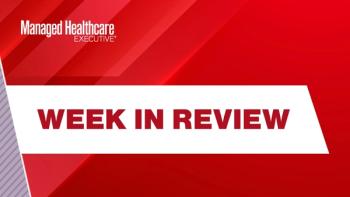
Dabigatran etexilate (Pradaxa): An oral direct thrombin inhibitor
New molecular entity: Dabigatran etexilate (Pradaxa) was approved for stroke prevention in atrial fibrillation.
In October, the direct thrombin inhibitor, dabigatran etexilate was approved by FDA to reduce the risk of stroke and systemic embolism in patients with nonvalvular atrial fibrillation. Dabigatran is an oral anticoagulant that works by inhibiting thrombin, an enzyme in the blood essential to blood clotting.
Efficacy. The clinical evidence for the efficacy of dabigatran comes from the multinational, randomized, parallel group the Randomized Evaluation of Long-Term Anticoagulation Therapy (RE-LY) trial, which compared 2 blinded doses of dabigatran (110 mg twice daily and 150 mg twice daily) with open-label warfarin [(dosed to target an international normalized ratio (INR) of 2 to 3)] in patients with nonvalvular atrial fibrillation at a higher risk of stroke (mean CHADS2 score=2.1). In total, 18,113 patients were randomized and followed for a median of 2 years. The RE-LY trial demonstrated that compared to both warfarin and dabigatran 110 mg twice daily, dabigatran 150 mg twice daily significantly reduced the primary composite end point of stroke and systemic embolism [HR compared to warfarin=0.65; (95% CI, 0.52–0.81) and compared to dabigatran 110 mg=0.72 (95% CI, 0.58–0.90)].
Safety. As with other anticoagulants, the most significant adverse event associated with dabigatran is clinically relevant bleeding. In the RE-LY trial, the risk of major bleeds was similar between dabigatran 150 mg and adjusted-dose warfarin in all major patient subgroups defined by baseline characteristics, with the exception of age, where a trend toward a higher incidence of major bleeding was observed with dabigatran [HR 1.2 (95% CI, 1.0–1.4)] for patients aged ≥75 years. There was also a higher rate of major gastrointestinal bleeds in patients receiving dabigatran 150 mg than in patients receiving adjusted-dose warfarin [HR vs warfarin=1.5; 95% CI, 1.2–1.9)], although it has been suggested that this may be a reflection of surveillance bias resulting from an increased incidence of dyspepsia in patients receiving dabigatran (11.3% vs 5.8%; P<.001). The risk of myocardial infarction was greater in patients who received dabigatran 150 mg compared to those who received warfarin [HR=1.38, 95% CI, 1.00–1.91)].
Newsletter
Get the latest industry news, event updates, and more from Managed healthcare Executive.

















































